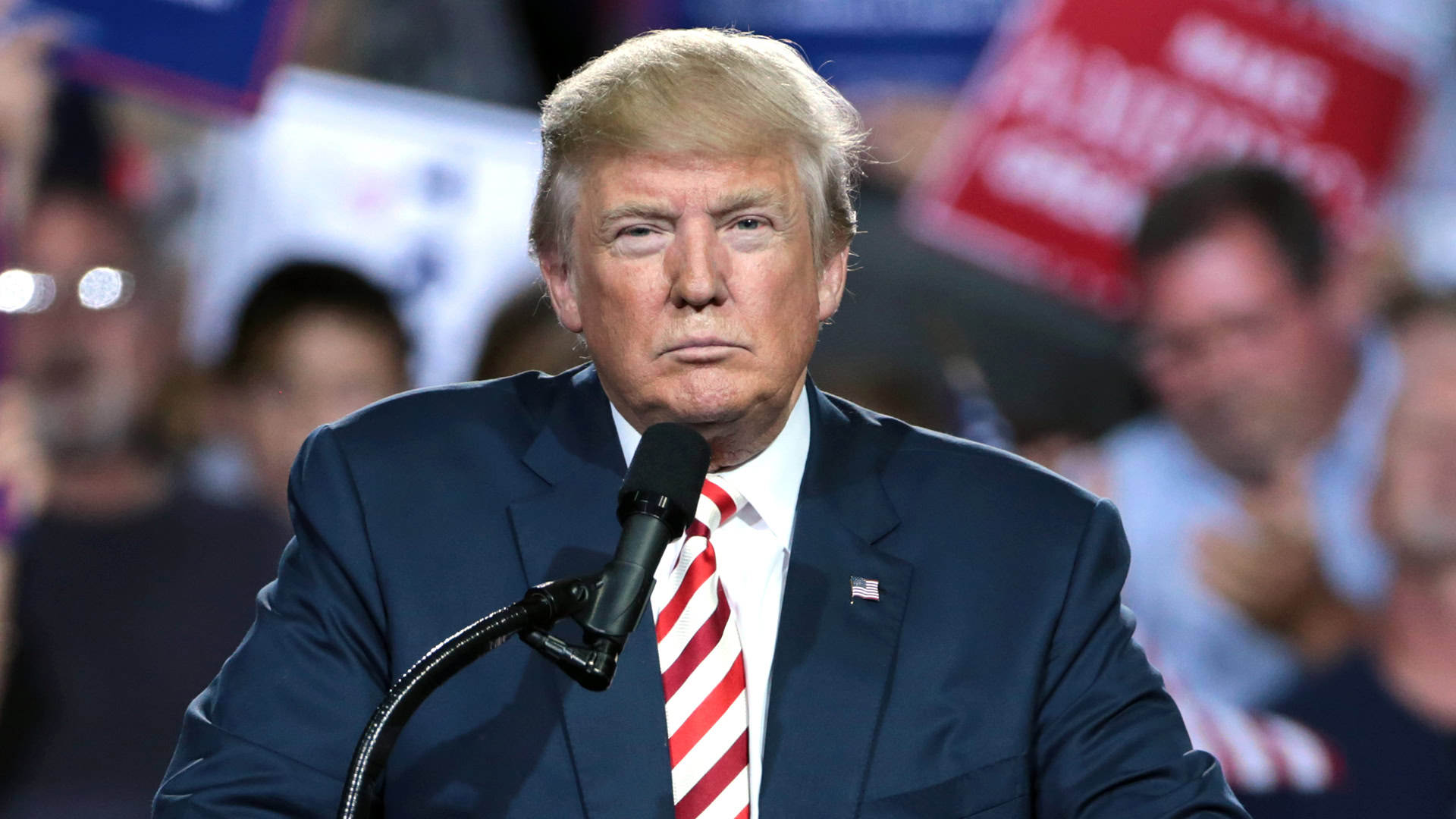
Ryan Haines / Android Authority
While on the campaign trail in 2024, Donald Trump repeatedly mentioned his plans to institute tariffs on non-US goods should he win the presidency. Now that he’s back in the White House, he has started fulfilling his tariff promises today. These tariffs will have a dramatic effect on the cost of goods within the US that are wholly or even partially sourced from other countries.
One industry that will see changes due to Trump’s tariffs is smartphones. Being that Android Authority is heavily focused on phones, I’m here to help break down what tariffs are supposed to do, why Trump is increasing them, and what this might mean for you, the smartphone consumer.
What is a tariff, and why do we have them?

Rita El Khoury / Android Authority
In brief, tariffs are taxes instituted by a government on other countries that export goods to that country. In the case of the US, tariffs tax non-US countries that send goods here for direct sale or to be included in the manufacturing of other products. For example, a smartphone made in China and sent to the US would be tariffed. Likewise, a component made in Taiwan that’s then sent to the US to be assembled into an electronic product would also be affected by a tariff. Tariffs are not just a US thing, though: countries worldwide tariff the US and each other, too.
A tariff is a tax levied by one country onto another. It is a way to earn revenue and a way to control foreign trade.
There are two reasons for tariffs. The most basic reason is that the country instituting the tariffs earns money — a lot of money, depending on the type of goods being imported. The second reason for tariffs is to control foreign trade. For example, an industry that significantly affects the United States’ gross domestic product (GDP) would be seen as very important to the country’s financial stability, so the government would want to do anything it could for US-based companies within that industry to continue to be successful. Tariffs on other countries might be part of that strategy, as they could empower the government to make it less likely that foreign goods would outprice/outsell domestic goods.
Generally, government leaders worldwide all work together to make tariffs as fair as possible. Each country wants to keep its coffers full, but trade can only be sustained long-term if everyone in the chain gets what they need. For this reason, tariffs have been treated very delicately by all previous US Presidents as well as other leaders around the globe. Trump, however, is making sweeping changes in this realm, the likes of which we’ve never seen before.
What is President Trump’s goal with these increased tariffs?

President Trump is determined to use tariffs to increase the amount of money the United States earns. Simultaneously, he hopes tariffs will bolster US-based companies by financially handicapping foreign companies. He has said, “Tariffs are about making America rich again and making America great again.”
Essentially, Trump’s plan is to make business in the US much more expensive for non-US companies. He expects tariff increases to have a domino effect. First, foreign companies with no choice but to do business in the US will now supply the government with more revenue thanks to higher tariffs on their goods. Meanwhile, foreign companies that can’t afford to take on the new financial burden of paying heavy tariffs will limit their US presence or even exit the country entirely, leaving holes in the market for American companies to fill. Likewise, American companies that heavily rely on foreign companies for their business will be financially inclined to slow or even cease that practice and instead work with US-based firms.
Trump sees tariffs as a way to ‘make America rich again’ by financially punishing foreign companies.
In other words, Trump’s hope is that heavier tariffs will tip the scales to make the US richer, increase domestic activity across numerous industries, and reduce foreign influence over various markets.
Despite Trump’s confidence that increasing tariffs will be good for the US economy and the businesses located here, there are many prospective problems with this approach. One of the most significant issues is that relatively few US-based companies make their goods in the US. In the case of smartphones, American companies like Apple, Google, and Motorola heavily rely on foreign countries — most notably Taiwan, China, India, and Vietnam — to create components and manufacture them into smartphones. This is mainly because labor, materials, and other aspects of the manufacturing process are so much cheaper in those countries.
This is where things get messy.
What will really happen with tariffs on the smartphone industry?

Robert Triggs / Android Authority
The primary criticism of Trump’s tariff plan is that companies — both domestic and foreign — will not start giving the US government more money. It is expected that almost all of them will simply raise the prices of their respective goods to cover the cost of the tariffs.
Take China, for example. Before today, Chinese goods were already subject to a 20% tariff in the US. What does that mean? Although the reality is more complicated than this, imagine that an American smartphone company uses Chinese manufacturing to make its phone. After all is said and done, that phone costs the American company $500 for the Chinese companies to produce. Because of this 20% tariff, when the phone enters the US, it needs to be sold for $600 (a 20% increase) just for the American company to break even. Obviously, that company will sell the phone in the US for more than $600 so it can cover its costs, cover the tariff, and make a profit.
Today, Trump effectively increased the tariff on Chinese goods to 54%. In the example I just gave above, that would mean the phone that cost $500 to produce now needs to be sold for $770 just to break even.
Trump expects companies to eat these tariff increases themselves. However, critics say that it is much more likely the costs will pass onto consumers.
Trump is convinced that one of three things will happen with these increases. The first is that the American company, in this example, will just eat the cost. The company will continue to sell its phone in the US for the same price it did when the tariff was at 20% and simply give the 34% extra to the United States government. If it doesn’t do that, Trump is expecting the company to drastically alter its business structure by working more closely with US-based firms to reduce the tariff’s effects on its products. And, if that doesn’t work and the smartphone company can’t keep up, another US company that is faster, leaner, and more efficient will step in and take over that newly-opened market segment. In all cases, the US makes more money and/or has a stronger grip on that market.
Critics of Trump’s tariffs, however, are quick to point out that it is far more likely that the American smartphone company, in my example, will just increase its prices by 34% to cover the increased tariff. If that happens, it’s us — smartphone consumers — who end up paying the tariff. In other words, the tariffs would become taxes not on companies but on us.
It’s possible, though, that the hypothetical smartphone company would spread out the increased costs of doing business. This means it could increase consumer prices a bit, shift a few sources to US-based firms, and reduce its profit margins to ensure consumers can still afford to buy its products. Even in that best-case scenario, prices still go up for you and me — and profits still go down for that company.
What the world is saying about these tariffs

Robert Triggs / Android Authority
As an example, Neil Shah, VP of Research at Counterpoint, had this to say about the idea of Trump’s tariffs moving manufacturing away from foreign countries and to the US instead:
I guess the logic [of Trump’s tariff increases] is ‘make it too expensive for smartphone OEMs to produce overseas and they’ll eventually shift to the US.’ But that will never happen without massive subsidies and cheaper and skilled labor. There is zero cost advantage in manufacturing in the US.
Yang Wang, also at Counterpoint, is worried about how higher prices for smartphones and other goods will affect the economy at large. “It’s tough to go against the math,” Wang said. “Higher prices equal lower demand. It’s ‘Economics 101,’ and I don’t think this ends well for anyone.”
Ursula von der Leyen, President of the European Commission, also does not see these tariffs going well. “The consequences will be dire for millions of people around the globe,” she said.
Investors are also shocked that Trump’s actual tariffs are much higher than what he said he would do during his campaign. “This was the worst-case scenario for tariffs, and [they] were not priced into the markets, which is why we are seeing such a risk-off reaction,” said Mary Ann Bartels, chief investment strategist at Sanctuary Wealth, in response to today’s Dow Jones Industrial Average drop.
Suffice it to say that consumers — not just in the US, but everyone — should be very worried about what this all means. While it’s almost a certainty that smartphone prices will increase at least somewhat this year, these tariffs could have a broader effect on most things American consumers buy. As I said earlier, nothing like this has ever been done before, but all signs point to rough times up ahead.









